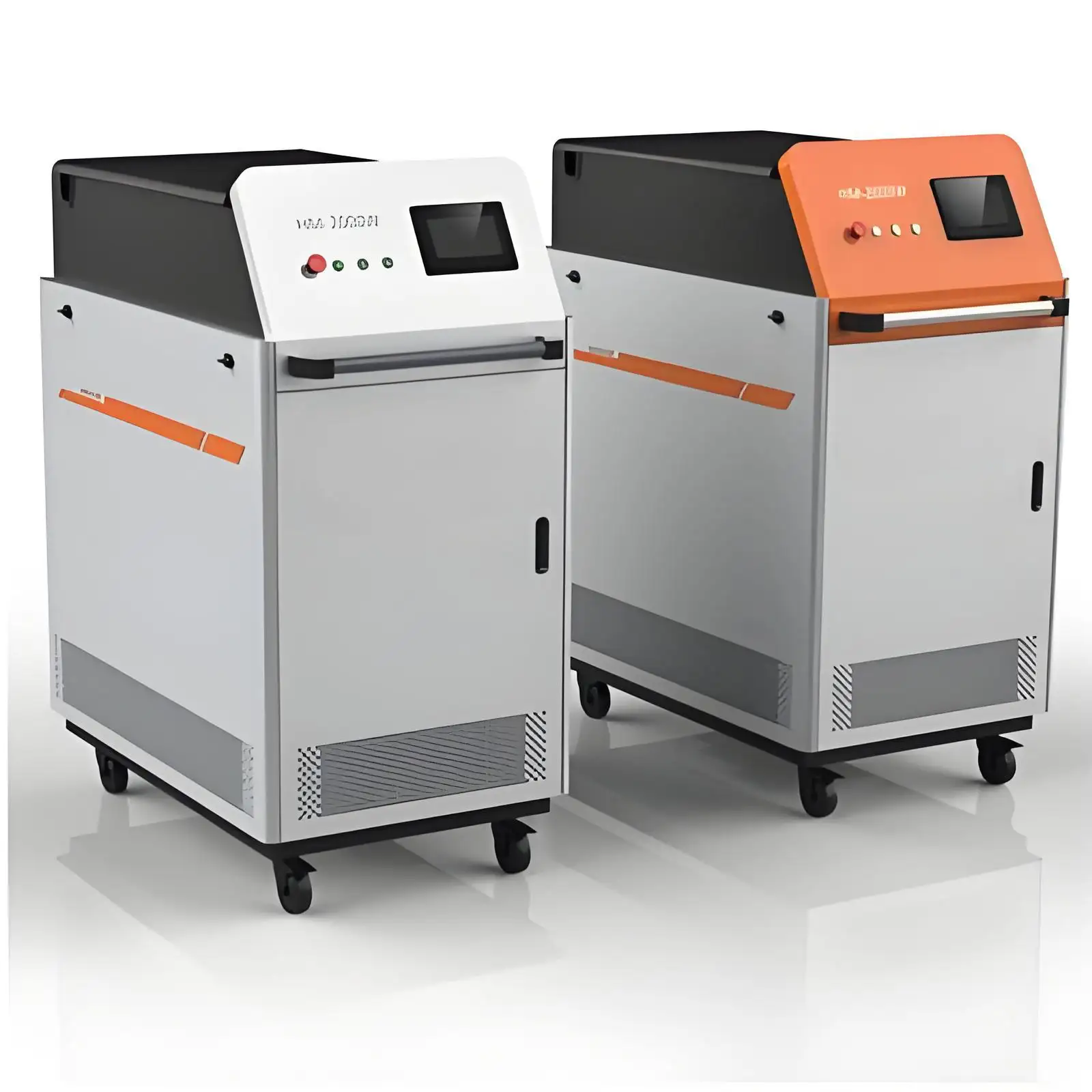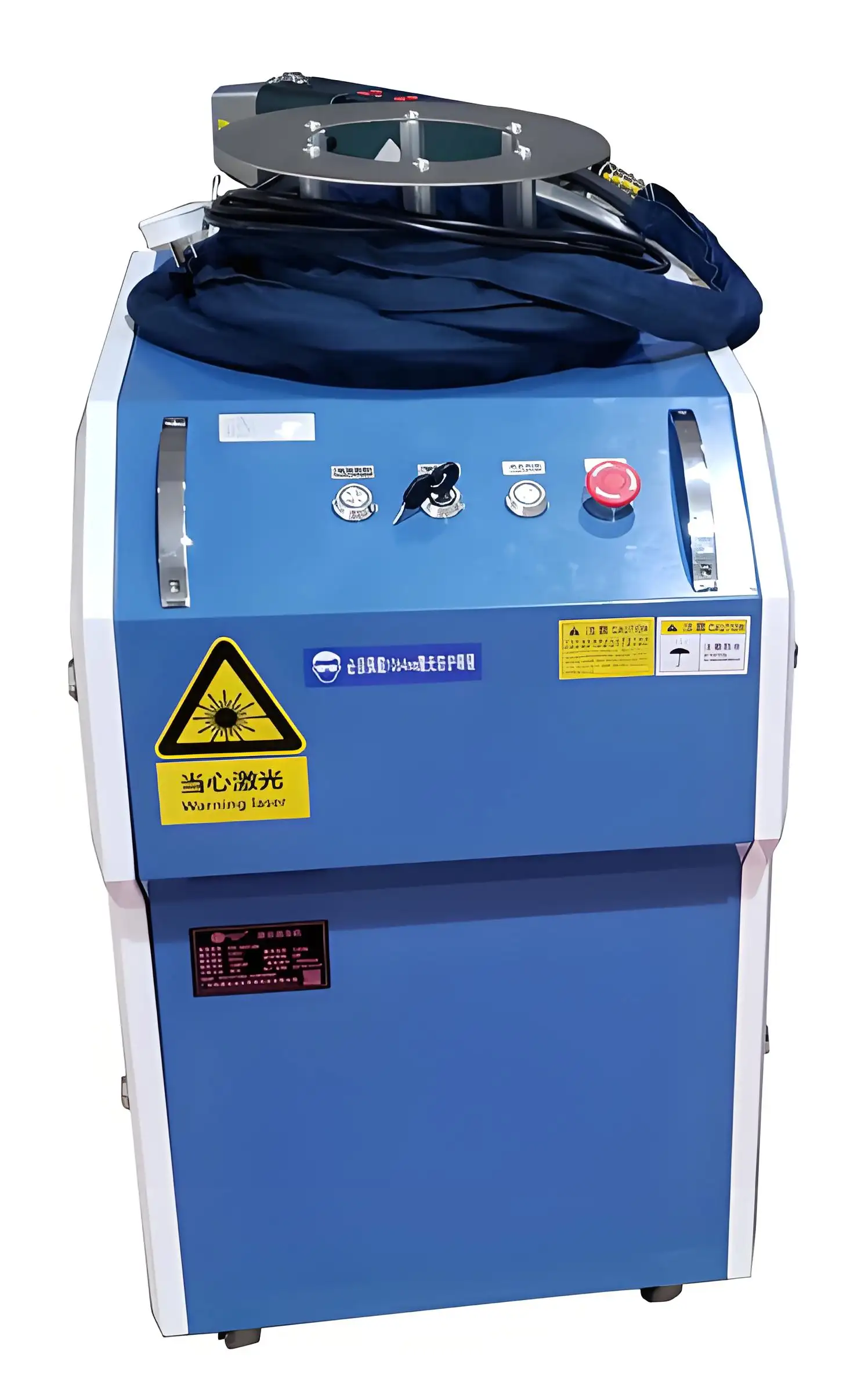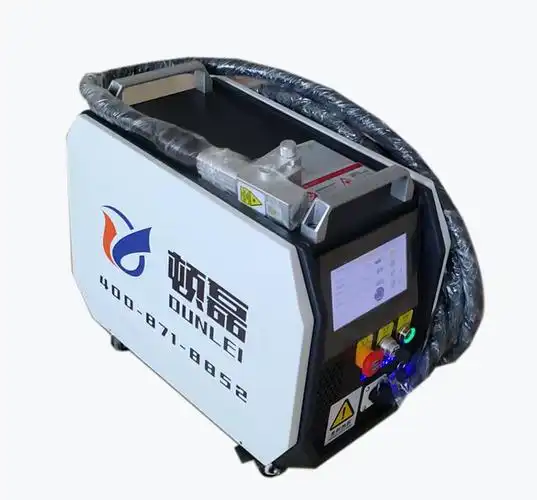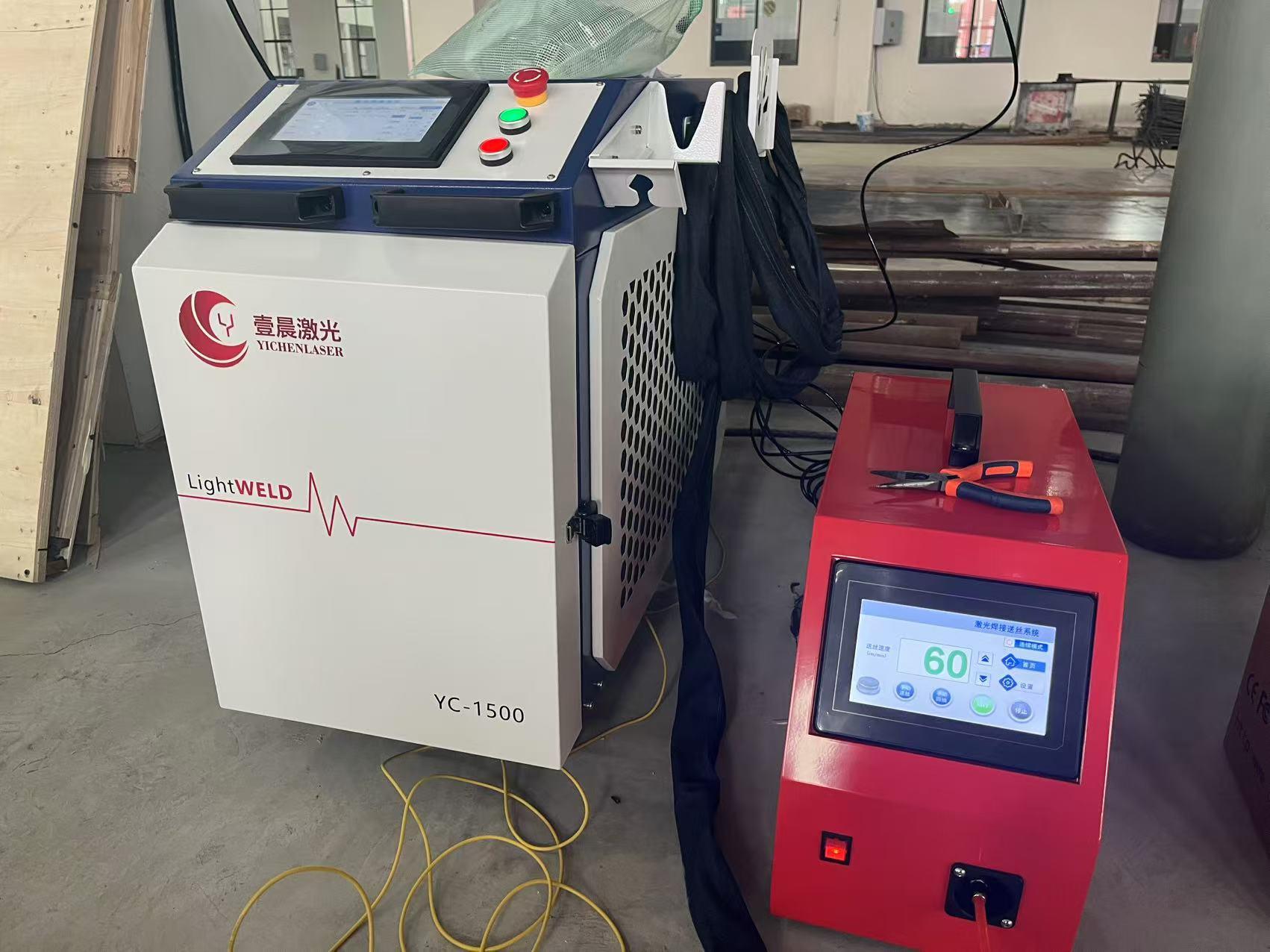In the world of industrial maintenance and surface preparation, laser rust removal equipment has become a game-changer. Its ability to efficiently and precisely remove rust, paint, and other contaminants from various surfaces has made it a popular choice across industries. However, like any piece of sophisticated machinery, laser rust removal equipment requires proper care and maintenance to ensure it operates at its best and has a long service life.
As someone who has been deeply involved in this industry for years, working with different types of laser equipment and seeing firsthand how they perform under various conditions, I’ve gathered a wealth of knowledge on how to extend the lifespan of laser rust removal equipment. In this article, I’ll share my insights and practical tips to help you get the most out of your investment.

Understanding Laser Rust Removal Equipment
Before diving into the maintenance tips, it’s essential to have a basic understanding of how laser rust removal equipment works. At its core, a laser rust removal system consists of a laser source, an optical delivery system, and a control unit. The laser source generates a high-energy laser beam, which is then directed onto the surface to be cleaned through the optical delivery system. The control unit allows the operator to adjust parameters such as laser power, pulse duration, and scanning speed to suit different cleaning requirements.
The laser beam interacts with the rust or contaminants on the surface, causing them to heat up rapidly and either vaporize or sublimate. This process effectively removes the unwanted layer without damaging the underlying substrate, making it a non-abrasive and environmentally friendly cleaning method.
Factors Affecting the Service Life of Laser Rust Removal Equipment
Several factors can influence the service life of laser rust removal equipment. Understanding these factors is crucial for implementing effective maintenance strategies. Here are some of the key ones:
1. Usage Frequency and Intensity
The more frequently and intensively you use your laser rust removal equipment, the faster its components will wear out. Continuous high-power operation can generate a significant amount of heat, which can stress the laser source and other internal components.
2. Environmental Conditions
The operating environment can also have a significant impact on the equipment’s lifespan. Dust, humidity, and temperature fluctuations can all affect the performance and reliability of the laser system. For example, dust can accumulate inside the equipment, causing overheating and component failure, while high humidity can lead to corrosion.
3. Quality of Components
The quality of the components used in the laser rust removal equipment plays a vital role in its longevity. High-quality components are more durable and less prone to wear and tear, which can help extend the equipment’s service life.
4. Maintenance and Care
Regular maintenance and proper care are perhaps the most critical factors in extending the service life of laser rust removal equipment. Neglecting maintenance can lead to premature component failure, reduced performance, and increased downtime.

Tips for Extending the Service Life of Laser Rust Removal Equipment
Now that we’ve identified the key factors affecting the service life of laser rust removal equipment, let’s explore some practical tips to help you extend its lifespan:
1. Follow the Manufacturer’s Guidelines
The first and most important tip is to always follow the manufacturer’s guidelines for operation, maintenance, and care. These guidelines are based on extensive testing and experience and are designed to ensure the optimal performance and longevity of your equipment. Make sure to read the user manual thoroughly and familiarize yourself with all the recommended procedures.
2. Regular Cleaning and Inspection
Regular cleaning is essential to prevent dust and debris from accumulating inside the equipment. Use a soft, lint-free cloth to wipe down the exterior surfaces and a can of compressed air to blow out any dust from the vents and openings. Additionally, perform a visual inspection of the equipment regularly to check for any signs of wear, damage, or loose connections. If you notice any issues, address them promptly to prevent further damage.
3. Monitor and Control Operating Conditions
As mentioned earlier, environmental conditions can have a significant impact on the equipment’s lifespan. Try to operate the laser rust removal equipment in a clean, dry, and temperature-controlled environment. If possible, install the equipment in a dedicated room or enclosure with proper ventilation and air conditioning. Additionally, monitor the temperature and humidity levels regularly and take corrective action if they exceed the recommended ranges.
4. Optimize Laser Parameters
Using the appropriate laser parameters for your specific cleaning application can help reduce stress on the equipment and extend its service life. Avoid using excessively high laser power or pulse durations, as this can generate unnecessary heat and increase the risk of component failure. Instead, work with your laser equipment supplier or a qualified technician to determine the optimal parameters for your needs.

5. Schedule Regular Maintenance
Regular maintenance is crucial for keeping your laser rust removal equipment in top condition. Schedule routine maintenance checks with a qualified technician at least once a year, or more frequently if you use the equipment heavily. During these checks, the technician will inspect and clean the internal components, replace any worn or damaged parts, and perform any necessary calibrations or adjustments.
6. Train Your Operators
Proper training for your operators is essential for ensuring the safe and efficient operation of the laser rust removal equipment. Make sure your operators are familiar with the equipment’s features, functions, and safety procedures. Provide them with regular training sessions to keep their skills up to date and reinforce good operating practices.
7. Use High-Quality Consumables
The quality of the consumables you use with your laser rust removal equipment can also affect its lifespan. For example, using low-quality laser optics or focusing lenses can reduce the efficiency of the laser beam and increase the risk of damage to the equipment. Always use high-quality consumables that are recommended by the manufacturer to ensure optimal performance and longevity.
8. Implement a Preventive Maintenance Program
In addition to regular maintenance checks, consider implementing a preventive maintenance program. This involves monitoring the equipment’s performance and condition on an ongoing basis and taking proactive measures to prevent potential issues before they occur. For example, you could set up a system to track the number of operating hours and schedule maintenance tasks based on this data.
Table: Maintenance Checklist for Laser Rust Removal Equipment
| Maintenance Task | Frequency | Notes |
|---|---|---|
| Clean Exterior Surfaces | Daily | Use a soft, lint-free cloth to wipe down the equipment. |
| Blow Out Dust from Vents and Openings | Weekly | Use a can of compressed air to remove dust. |
| Visual Inspection | Monthly | Check for signs of wear, damage, or loose connections. |
| Check Temperature and Humidity Levels | Daily | Ensure they are within the recommended ranges. |
| Laser Optics and Focusing Lens Inspection | Quarterly | Check for scratches, dirt, or other defects. |
| Cooling System Maintenance | Biannually | Clean the cooling system and check the coolant level. |
| Electrical System Inspection | Annual | Check for loose connections, damaged wires, or other issues. |
| Full System Calibration | Annual | Have a qualified technician perform a full system calibration. |
Real-World Examples and Case Studies
To further illustrate the importance of proper maintenance and care in extending the service life of laser rust removal equipment, let’s look at some real-world examples and case studies:
Case Study 1: Manufacturing Facility
A manufacturing facility that specializes in producing automotive parts invested in a high-end laser rust removal system. Initially, they followed the manufacturer’s guidelines for operation and maintenance but gradually became lax in their maintenance practices. Over time, the equipment started to experience frequent breakdowns and reduced performance. After consulting with a laser equipment expert, they implemented a comprehensive maintenance program that included regular cleaning, inspection, and calibration. As a result, the equipment’s reliability improved significantly, and its service life was extended by several years.

Case Study 2: Shipyard
A shipyard that uses laser rust removal equipment for cleaning ship hulls and other components faced challenges due to the harsh operating environment. Dust, salt, and moisture were constantly present, which caused the equipment to wear out quickly. To address this issue, the shipyard installed the equipment in a dedicated enclosure with proper ventilation and air conditioning. They also implemented a strict cleaning and inspection schedule to prevent dust and debris from accumulating inside the equipment. These measures helped to extend the equipment’s service life and reduce downtime.
Conclusion
Extending the service life of laser rust removal equipment requires a proactive and comprehensive approach to maintenance and care. By following the manufacturer’s guidelines, performing regular cleaning and inspection, monitoring and controlling operating conditions, optimizing laser parameters, scheduling regular maintenance, training your operators, using high-quality consumables, and implementing a preventive maintenance program, you can ensure that your equipment operates at its best for years to come.
Remember, investing in proper maintenance and care is not only cost-effective in the long run but also helps to ensure the safety and efficiency of your operations. So, take the time to implement these tips and enjoy the benefits of a long-lasting and reliable laser rust removal system.
Related Questions
Q1: How often should I replace the laser optics in my laser rust removal equipment?
A1: The frequency of replacing laser optics depends on several factors, including the quality of the optics, the intensity of use, and the operating environment. As a general guideline, it’s a good idea to inspect the optics regularly for signs of wear, scratches, or dirt. If you notice any issues, it’s best to replace the optics promptly to maintain optimal performance. Some manufacturers recommend replacing optics every few years or after a certain number of operating hours, but it’s always best to consult with your equipment supplier or a qualified technician for specific recommendations.
Q2: Can I perform maintenance on my laser rust removal equipment myself, or do I need a professional?
A2: While some basic maintenance tasks, such as cleaning the exterior surfaces and blowing out dust from vents, can be performed by the operator, more complex maintenance tasks, such as inspecting and replacing internal components, calibrating the system, and troubleshooting issues, should be performed by a qualified technician. Laser rust removal equipment is sophisticated machinery that requires specialized knowledge and skills to maintain properly. Attempting to perform complex maintenance tasks yourself could result in damage to the equipment or even personal injury.

Q3: How can I tell if my laser rust removal equipment is due for maintenance?
A3: There are several signs that your laser rust removal equipment may be due for maintenance. These include reduced cleaning performance, increased operating noise, unusual vibrations, error messages on the control unit, or visible signs of wear or damage. If you notice any of these signs, it’s best to schedule a maintenance check with a qualified technician as soon as possible to prevent further damage and ensure the equipment’s reliability.
Q4: Are there any environmental factors I should be particularly aware of when using laser rust removal equipment?
A4: Yes, there are several environmental factors that can affect the performance and lifespan of laser rust removal equipment. Dust, humidity, and temperature fluctuations are all important considerations. Dust can accumulate inside the equipment, causing overheating and component failure, while high humidity can lead to corrosion. Additionally, extreme temperatures can affect the performance of the laser source and other internal components. To minimize the impact of these factors, try to operate the equipment in a clean, dry, and temperature-controlled environment.
Q5: What should I do if my laser rust removal equipment breaks down unexpectedly?
A5: If your laser rust removal equipment breaks down unexpectedly, the first thing to do is to stop using it immediately to prevent further damage. Then, contact your equipment supplier or a qualified technician for assistance. They will be able to diagnose the issue and provide you with guidance on how to proceed. Depending on the nature of the problem, they may be able to provide remote support or schedule a service visit to repair the equipment on-site. It’s important to have a backup plan in place in case of unexpected breakdowns to minimize downtime and ensure the continuity of your operations.






